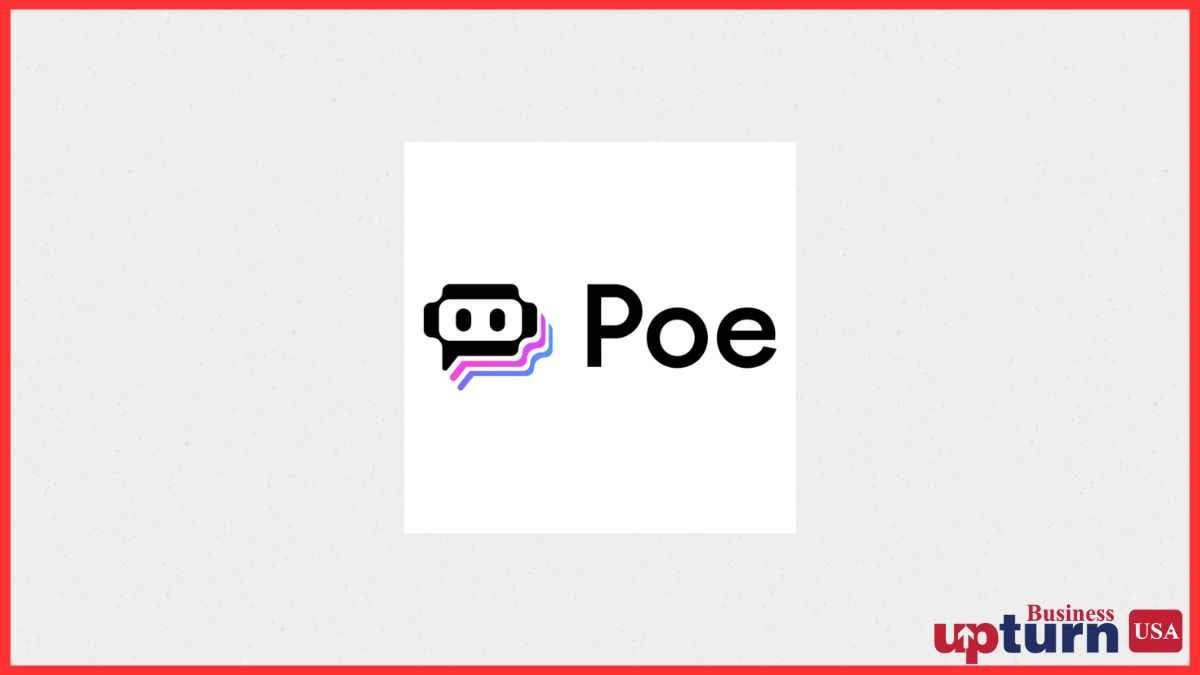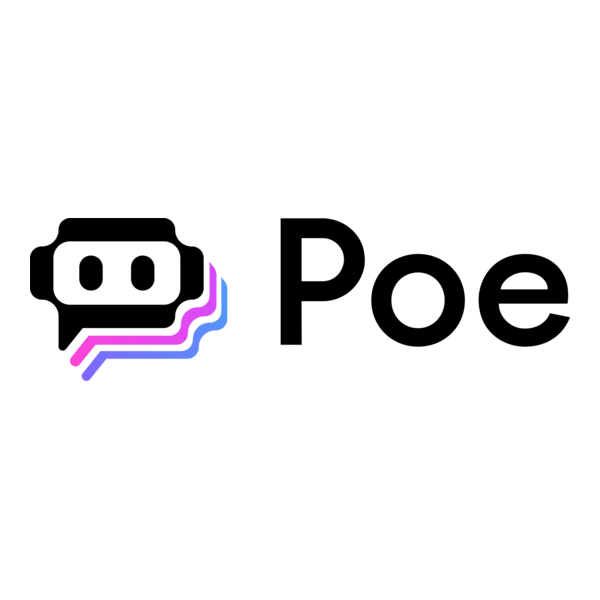
Advertisement
Poe, an AI chatbot aggregation platform created by Quora, has rapidly positioned itself as a go-to hub for accessing multiple large language models in one place. Launched in December 2022, Poe allows users to interact with AI models from companies like OpenAI, Anthropic, Google, and others, without needing to switch platforms or manage separate accounts. In the United States, where AI adoption is accelerating across both personal and professional use cases, Poe’s business model is designed to capture value through subscription services, API integration, and partnerships. By aggregating various AI providers into a unified experience, Poe monetises convenience, accessibility, and premium usage — a formula that is particularly appealing to American consumers.
In this article, we will break down exactly how Poe generates revenue in the US market, exploring its subscription tiers, partnerships, licensing opportunities, and potential future monetisation strategies. We will also examine how its competitive positioning in the American AI ecosystem influences its growth potential.
Subscription-Based Monetisation and Its Role in Poe’s US Strategy
At the heart of Poe’s business model in the United States lies its subscription revenue stream. Poe operates on a freemium model, offering basic chatbot access for free but reserving extended capabilities and premium AI models for paying subscribers.
How Poe’s Premium Tiers Appeal to American Tech Enthusiasts
Poe offers a Poe Premium subscription in the US priced at $19.99 per month or $199.99 annually. This plan grants subscribers:
- Higher daily message limits to advanced AI models such as GPT-4 and Claude 3 Opus.
- Faster response times during peak usage periods.
- Access to the latest versions of partner AI models.
This tier caters primarily to two US market segments:
- Early Adopters and Tech Enthusiasts — individuals who regularly experiment with AI for creativity, productivity, or research.
- Small Business Owners and Independent Creators — users who rely on AI for content generation, customer communication, or ideation.
For these demographics, the cost of Poe Premium is seen as justifiable given the combined convenience of having multiple AI models in one platform.
Impact of Poe’s Subscription Model on US Consumers
By bundling access to multiple AI services into a single subscription, Poe removes the need for American consumers to manage separate payments for each AI provider. In many cases, subscribing directly to GPT-4 or Claude via their own platforms can cost more or limit cross-model switching. Poe’s positioning is similar to a “Netflix for AI chatbots,” a concept that resonates with US consumers familiar with bundled entertainment services.
API Usage and Licensing Agreements as Revenue Streams
Beyond subscriptions, Poe generates income through technical integrations and API usage. Since Poe acts as an intermediary between AI model providers and end-users, its platform can serve as a gateway for businesses and developers seeking to integrate AI capabilities into their own products.
Poe’s Role as an AI Distribution Layer in the US
In the US, tech companies increasingly prefer to integrate AI features into their applications rather than building their own models from scratch. Poe facilitates this by:
- Partnering with AI model creators to offer paid API access.
- Handling billing and usage monitoring on behalf of partner AI companies.
- Providing a ready-made, consumer-facing interface.
While the specific terms of Poe’s revenue share agreements are not public, industry norms suggest that Poe likely takes a percentage of API-related revenue or charges integration fees.

Enterprise-Level AI Access Through Poe
For American enterprises, Poe can offer customised plans that allow internal teams to access multiple AI models securely. This could include:
- Volume-based API pricing.
- Dedicated account management.
- Compliance support for regulated industries such as healthcare and finance.
Such enterprise offerings could become a significant growth driver if Poe positions itself as a trusted AI integration layer for corporate clients in the US.
Strategic Partnerships and Model Access Agreements
Poe’s competitive edge in the US market comes from its partnerships with leading AI developers. These agreements allow Poe to offer users direct access to proprietary models without requiring them to subscribe to each provider individually.
Monetisation Through Aggregated Access
By aggregating models like OpenAI’s GPT-4, Anthropic’s Claude 3, and other emerging models, Poe turns the diversity of AI tools into a unique selling proposition. Monetisation occurs through:
- Premium subscription fees for access to the latest or most capable models.
- Promotional opportunities for AI companies looking to gain visibility with US consumers.
This aggregation model mirrors how app stores or streaming services operate — serving as both a distribution channel and a marketing platform for creators.
Potential for Revenue-Sharing with AI Developers
As the AI market matures in the United States, revenue-sharing agreements between Poe and AI developers may become a larger income stream. This could involve:
- Percentage splits on subscription upgrades triggered by a specific model’s demand.
- Promotional fees for highlighting certain models in Poe’s interface.
Such arrangements would align incentives, ensuring Poe and its partners both benefit from the growing American appetite for AI tools.
Mobile vs. Desktop Usage and Monetisation Implications
Poe is available as both a web platform and a mobile app on iOS and Android. In the US market, mobile usage is a critical growth driver due to the high adoption of smartphones for productivity and entertainment.
How Mobile Usage Boosts Subscription Conversions in the US
Mobile users in the US tend to engage with AI chatbots more casually but more frequently compared to desktop users. Poe’s mobile app encourages:
- On-the-go creative tasks.
- Quick question-and-answer interactions.
- Spontaneous idea generation.
Frequent mobile interactions increase the likelihood of hitting free-tier limits, nudging users toward premium subscriptions.
The Role of App Store Revenue in Poe’s Model
In the US, subscriptions purchased via iOS or Android app stores incur platform fees (typically 15-30%). While this means Poe must share a portion of its mobile revenue with Apple and Google, the convenience of mobile subscriptions significantly expands its paying customer base.
Potential Future Monetisation Strategies for Poe in the US
While Poe’s current business model is heavily subscription-driven, several potential revenue expansions could strengthen its US market presence.
In-App AI Marketplace
Poe could introduce a marketplace where US developers and AI creators sell custom bots or specialised prompt packs. Poe could take a commission on each sale, similar to app store economics.
Data Insights and Analytics for Businesses
With user consent, Poe could anonymise and aggregate chatbot interaction data to provide valuable market insights to American companies. This would open a B2B data-as-a-service revenue stream.
Education and Training Partnerships
Given the US education sector’s interest in AI literacy, Poe could partner with schools, universities, and training providers to offer discounted educational plans, funded partly by institutional licensing agreements.
Competitive Positioning in the US AI Ecosystem
In the United States, Poe competes with both individual AI providers (like ChatGPT or Claude) and other AI aggregation platforms. Its differentiator is the multi-model access approach, which appeals to American consumers seeking flexibility.
Advantages Over Single-Provider Platforms
- Consolidated billing and subscription management.
- Ability to switch between models instantly.
- Wider feature set compared to single-model apps.
These advantages help Poe capture users who want variety without the hassle of multiple accounts.
A Unique Future Angle: Poe as a Gateway to the Virtual US Economy
Looking beyond traditional monetisation, Poe’s model could evolve into a virtual AI services economy in the US. Imagine a future where:
- American freelancers create specialised AI-powered tools inside Poe.
- Businesses hire these bots for customer service, content creation, or training.
- Poe acts as the marketplace operator, charging commissions on transactions.
This transformation would shift Poe from being merely a chatbot hub to becoming an AI-powered economic platform — potentially disrupting gig economy marketplaces by replacing human freelancers with bot-driven services.
If implemented, this could reshape how Americans earn and spend money in a digital economy, blending AI convenience with platform-driven commerce in ways that go far beyond the subscription model of today.
Conclusion
Poe’s US market business model is currently anchored in subscriptions, API integrations, and strategic partnerships. Its ability to monetise through convenience, bundled access, and premium features has made it an attractive choice for American users seeking multiple AI tools in one place. With future possibilities in AI marketplaces, educational partnerships, and enterprise solutions, Poe is well-positioned to expand its revenue streams. The next phase of its growth could see it move beyond being an AI aggregator into becoming a central hub in the virtual US economy.
This article is intended for informational and editorial purposes only. It does not constitute endorsement or promotion of any artificial intelligence technology. Business Upturn makes no representations or warranties regarding the accuracy, completeness, or reliability of the information provided.
